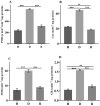Physiological and biochemical responses involved in vegetative desiccation tolerance of resurrection plant Selaginella brachystachya
- PMID: 33680700
- PMCID: PMC7897589
- DOI: 10.1007/s13205-021-02667-1
Physiological and biochemical responses involved in vegetative desiccation tolerance of resurrection plant Selaginella brachystachya
Abstract
The vegetative desiccation tolerance of Selaginella brachystachya has been evaluated for its ability to revive from a desiccation (air dry) state and start normal functioning when rehydrated. In this study, S. brachystachya was identified by DNA barcoding. Experiments were conducted using the detached hydrated, desiccated and rehydrated fronds under laboratory conditions to understand the mechanism of revival upon the water availability. Scanning Electron Microscope images during desiccation showed closed stomata and inside curled leaves. Chlorophyll concentration decreased by 1.1 fold in desiccated state and recovered completely upon rehydration. However, the total carotenoid content decreased 4.5 fold while the anthocyanin concentration increased 5.98 fold and the CO2 exchange rate became negative during desiccation. Lipid peroxidation and superoxide radical production were enhanced during desiccation by 68.32 and 73.4%, respectively. Relative electrolyte leakage was found to be minimal during desiccation. Activities of antioxidant enzymes, namely peroxidase (158.33%), glutathione reductase (107.70%), catalase (92.95%) and superoxide dismutase (184.70%) were found to be higher in the desiccated state. The proline concentration increased by 1.4 fold, starch concentration decreased 3.9 fold and sucrose content increased 2.8 fold during desiccation. Upon rehydration, S. brachystachya recovered its original morphology, physiological and biochemical functions. Our results demonstrate that S. brachystachya minimizes desiccation stress through a range of morphological, physiological and biochemical mechanisms. These results provide useful insights into desiccation tolerance mechanisms for potential utilization in enhancing stress tolerance in crop plants.
Supplementary information: The online version contains supplementary material available at 10.1007/s13205-021-02667-1.
Keywords: Antioxidants; Desiccation tolerance; Photosynthetic parameters; Proline; REL; ROS; RWC; Resurrection plants; S. brachystachya; Starch; Sucrose; Ultrastructure.
© King Abdulaziz City for Science and Technology 2021.
Conflict of interest statement
Conflict of InterestThe authors declare that they have no conflicts of interest.
Figures







Similar articles
-
Vegetative desiccation tolerance in Eragrostiella brachyphylla: biochemical and physiological responses.Heliyon. 2020 Sep 18;6(9):e04948. doi: 10.1016/j.heliyon.2020.e04948. eCollection 2020 Sep. Heliyon. 2020. PMID: 32995628 Free PMC article.
-
Desiccation-induced physiological and biochemical changes in resurrection plant, Selaginella bryopteris.J Plant Physiol. 2010 Nov 1;167(16):1351-9. doi: 10.1016/j.jplph.2010.05.001. Epub 2010 Jun 1. J Plant Physiol. 2010. PMID: 20605652
-
Desiccation tolerance mechanism in resurrection fern-ally Selaginella tamariscina revealed by physiological and proteomic analysis.J Proteome Res. 2010 Dec 3;9(12):6561-77. doi: 10.1021/pr100767k. Epub 2010 Nov 5. J Proteome Res. 2010. PMID: 20923197
-
Drying without senescence in resurrection plants.Front Plant Sci. 2014 Feb 12;5:36. doi: 10.3389/fpls.2014.00036. eCollection 2014. Front Plant Sci. 2014. PMID: 24575108 Free PMC article. Review.
-
Surviving metabolic arrest: photosynthesis during desiccation and rehydration in resurrection plants.Ann N Y Acad Sci. 2016 Feb;1365(1):89-99. doi: 10.1111/nyas.12884. Epub 2015 Sep 16. Ann N Y Acad Sci. 2016. PMID: 26376004 Review.
Cited by
-
Effect of Drying Kinetics, Volatile Components, Flavor Changes and Final Quality Attributes of Moslae herba during the Hot Air Thin-Layer Drying Process.Molecules. 2023 May 5;28(9):3898. doi: 10.3390/molecules28093898. Molecules. 2023. PMID: 37175307 Free PMC article.
-
Decoding the physicochemical basis of resurrection: the journey of lichen Flavoparmelia caperata through prolonged water scarcity to full rehydration.BMC Plant Biol. 2024 Dec 28;24(1):1268. doi: 10.1186/s12870-024-05751-9. BMC Plant Biol. 2024. PMID: 39730993 Free PMC article.
-
Antioxidant Defense during Recovery of Resurrection Plant Haberlea rhodopensis from Drought- and Freezing-Induced Desiccation.Plants (Basel). 2022 Jan 10;11(2):175. doi: 10.3390/plants11020175. Plants (Basel). 2022. PMID: 35050062 Free PMC article.
-
Reactivation of the Photosynthetic Apparatus of Resurrection Plant Haberlea rhodopensis during the Early Phase of Recovery from Drought- and Freezing-Induced Desiccation.Plants (Basel). 2022 Aug 23;11(17):2185. doi: 10.3390/plants11172185. Plants (Basel). 2022. PMID: 36079568 Free PMC article.
-
Non-chlorophyllous and crypto-chlorophyllous fern spores differ in their mobilisation of fatty acids during priming.Physiol Plant. 2023 Jan;175(1):e13848. doi: 10.1111/ppl.13848. Physiol Plant. 2023. PMID: 36628548 Free PMC article.
References
-
- Abdalla KO, Baker B, Rafudeen MS. Proteomic analysis of nuclear proteins during dehydration of the resurrection plant Xerophyta viscosa. Plant Growth Regul. 2010;62:279–292. doi: 10.1007/s10725-010-9497-2. - DOI
-
- Abouzari A, Fakheri BA. Reactive oxygen species: generation, oxidative damage, and signal transduction. Int J Life Sci. 2015;9:3–17. doi: 10.3126/ijls.v9i5.12699. - DOI
-
- Alam A, Dwivedi A, Emmanuel I. Resurrection plants: Imperative resources in developing strategies to drought and desiccation pressure. Plant Sci Today. 2019;6:333. doi: 10.14719/pst.2019.6.3.542. - DOI
-
- Anwar Hossain M, Hoque MdA, Burritt DJ, Fujita M. oxidative damage to plants. Amsterdam: Elsevier; 2014. Proline protects plants against abiotic oxidative stress; pp. 477–522.
LinkOut - more resources
Full Text Sources
Other Literature Sources

